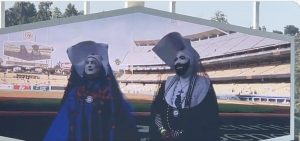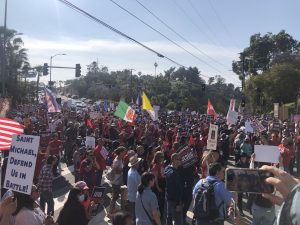Protests in Sri Lanka reached a crescendo with the storming of the Presidential palace. After weeks of agitation- precipitated by long power cuts, spiralling prices and shortages in food, fuel, etc.– angry masses of ordinary Lankans marched to Colombo from all corners of the country on July 9th. Defying the curfew orders imposed by the police in districts around the capital city, they marched in numbers to storm the Presidential Palace. President Gotabaya Rajapaksa and Prime Minister Ranil Wickremesinghe were moved to undisclosed locations, announcing their intentions to resign soon after. While PM Wickremesinghe confirmed his resignation without haste, President Rajapaksa plans to do the same today. If he does indeed go through with it, the once feared Gotabaya will become the first sitting Lankan President to quit office. The twin resignations have paved the way for an all-party Government to take over temporarily.
Also Read: Sri Lankan President Rajapaksa’s whereabouts not known; Reports say unknown people on board two Navy ships that left Colombo port
Whilst the protests saw an estimated 200000 people make their way to Colombo, a core group of about a dozen activists engineered the final push. United by the ongoing crisis, the group brought together people from disparate backgrounds, such as a Catholic priest, a digital strategist and a playwright, to name but a few.
With the movement-popularly known as ‘Aragalaya’, struggle in Sinhalese- on the wane after an initial hubbub of activity, the strategists decided on a multi-pronged campaign to rouse the masses. Cutting across multiple platforms- online campaigns, door-to-door campaigning, getting together with rival political parties, labour and student unions, including the powerful Inter University Students’ Federation (IUSF)- the group cast their net wide to unseat the present government. As lakhs marched into the city- on trains, buses, lorries, bicycles and even on foot- chants of “Gota Go Home” rang through Colombo’s fort area on the 9th, set to go down as a historic day in the island nation’s history.
Also Read: Crisis-hit Sri Lanka lifts curfew order after backlash
Surprised by the turnout, Chameera Dedduwage, a digital strategist and part of the core group, attributes its success to a mix of factors:
“It was 50 percent premeditation and coordination, another 30 percent willingness of the people and 20 percent luck,” quotes The Reuters.
Playwright Ruwanthie de Chickera calls it “the most unprecedented gathering in this country. Full stop.” While Jeevanth Peiris, priest and member of the Aragalaya core group, is still incredulous at the strength of the gathering:
“We honestly expected only 10,000 with all these restrictions, all this intimidation. We thought 5,000 to 10,000…There were so many elderly, teenagers, youth, women. People didn’t want to give up, didn’t want to withdraw,” he said to Reuters.
Also Read: Watch: Protestors swim in Sri Lankan President Gotabaya Rajapaksa’s pool
Protesters assembled in other parts of Sri Lanka as well. In Galle, as the nation’s cricket team played a thrilling win against Australia, protesters gathered outside the venue, snaking across the streets that skirt it. Many perched themselves on the Dutch Fort overlooking the Galle International Stadium, defying orders by the Sri Lankan Cricket Board, banning protesters from raising slogans in and around cricket grounds.
Australian captain Pat Cummins, when asked about the protests that swarmed the ground, understood its necessity:
“The protests yesterday, you couldn’t escape it…You could just hear kind of when it changed from a protest to a party. And chatting to some of the staff around the hotel and a couple of drivers, they’re doing it really tough. They’re having one day eating, one day off eating to try and feed their kids. It’s really tough.”






